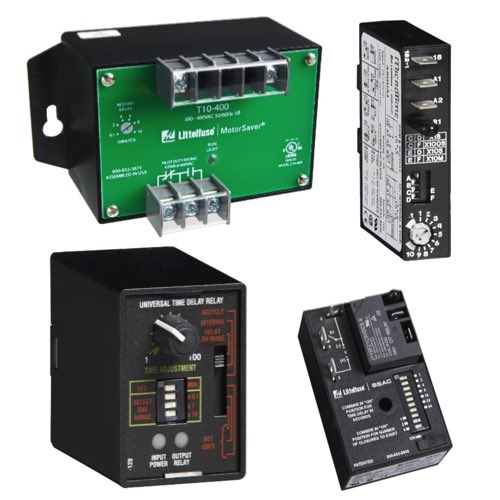Littelfuse Time Delay Relays

Littelfuse time delay relays are specialized electrical components designed to provide controlled timing functions in various circuits and applications. These relays are particularly useful in scenarios where a specific time delay is required before activating or deactivating a circuit. They are commonly used in industrial control systems, automotive applications, and various other electronic systems.
The fundamental feature of a Littelfuse time delay relay is its ability to delay the electrical signal for a preset period. This delay can be either in the activation (on-delay) or deactivation (off-delay) of a circuit. For instance, in an on-delay configuration, the relay will wait for a predetermined time after receiving the control signal before closing the contacts and completing the circuit. Conversely, in an off-delay setup, the relay keeps the circuit closed for a set time after the control signal is removed before opening the contacts.
More Information about Littelfuse Time Delay Relays
Littelfuse designs its time delay relays to be highly versatile, offering a range of time settings that can be easily adjusted to meet specific requirements. This flexibility is essential for customization in various applications, allowing users to set the delay time according to their specific needs.
In terms of construction, Littelfuse time delay relays are built to ensure durability and reliability, withstanding different environmental conditions and operational stresses. This makes them suitable for use in environments where they might be exposed to factors like vibration, temperature fluctuations, and electrical noise.
Another significant aspect of Littelfuse time delay relays is their ease of installation and use. Many models come with user-friendly interfaces, simple mounting options, and clear instructions, making them accessible even for those who are not electrical experts. This ease of use extends to the adjustment of time settings, which can typically be done with minimal tools and technical know-how.
What is a Relay & How it Works
What is a relay?
A relay is an electrically operated switch. Most relays use an electromagnetic to operate the switch. An electromagnet is a device that creates a magnetic field by passing an electrical current through a coil of wire. The magnetic field is then turned off when the current is removed.
Why use relays?
Relays are commonly used when there is a need to control a switch with high voltage or circuits with large amounts of current passing through them. Operating these types of switches manually can be dangerous, inefficient and impractical. By using relays, operational safety is increased while also providing the ability to use smaller, safer and less expensive electrical equipment to control devices. Using relays allow for control of several devices on a single switch, as opposed to using several switches for each device. Relays can be combined with timers and logic circuits to assist in electrical automation.
How do relays work?
A relay consists of two separate circuits that work together to open or close a switch (or contacts). The first circuit drives the coil (or electromagnet). The electricity passes through the coil, creating a magnetic field. The second circuit contains a set contacts and a separate power source. This circuit is what provides power to the electrical load.
When electricity passes through the coil, it creates a magnetic field. This magnetic field pulls the contact from the other circuit closed (or against the stationary contact) which will allow current to pass through the contacts, therefore allowing the load to become energized. When the coil is de-energized, the magnetic field is gone which allows the contact to be pushed back into its original state, de-energizing the load side of the circuit.

